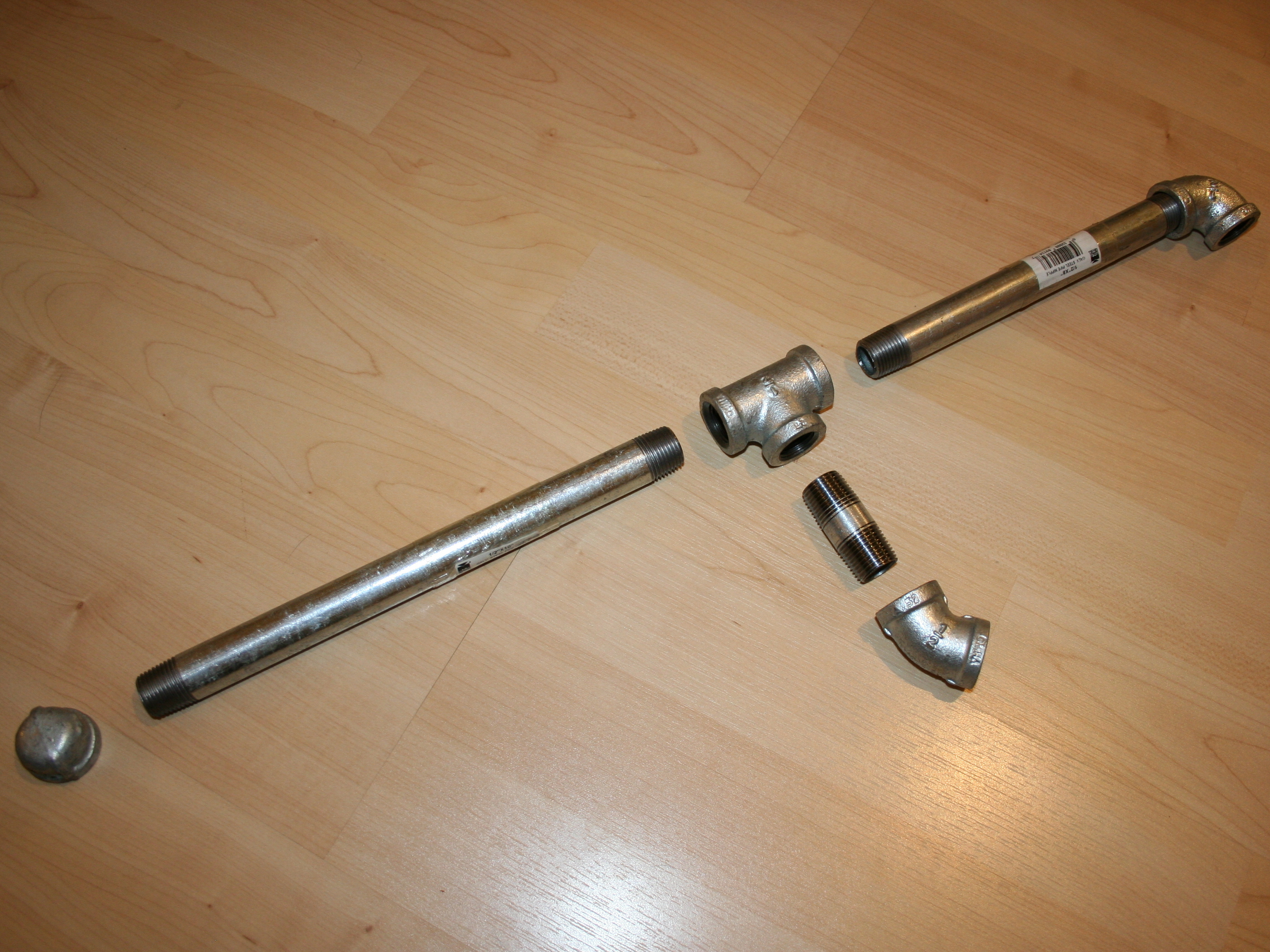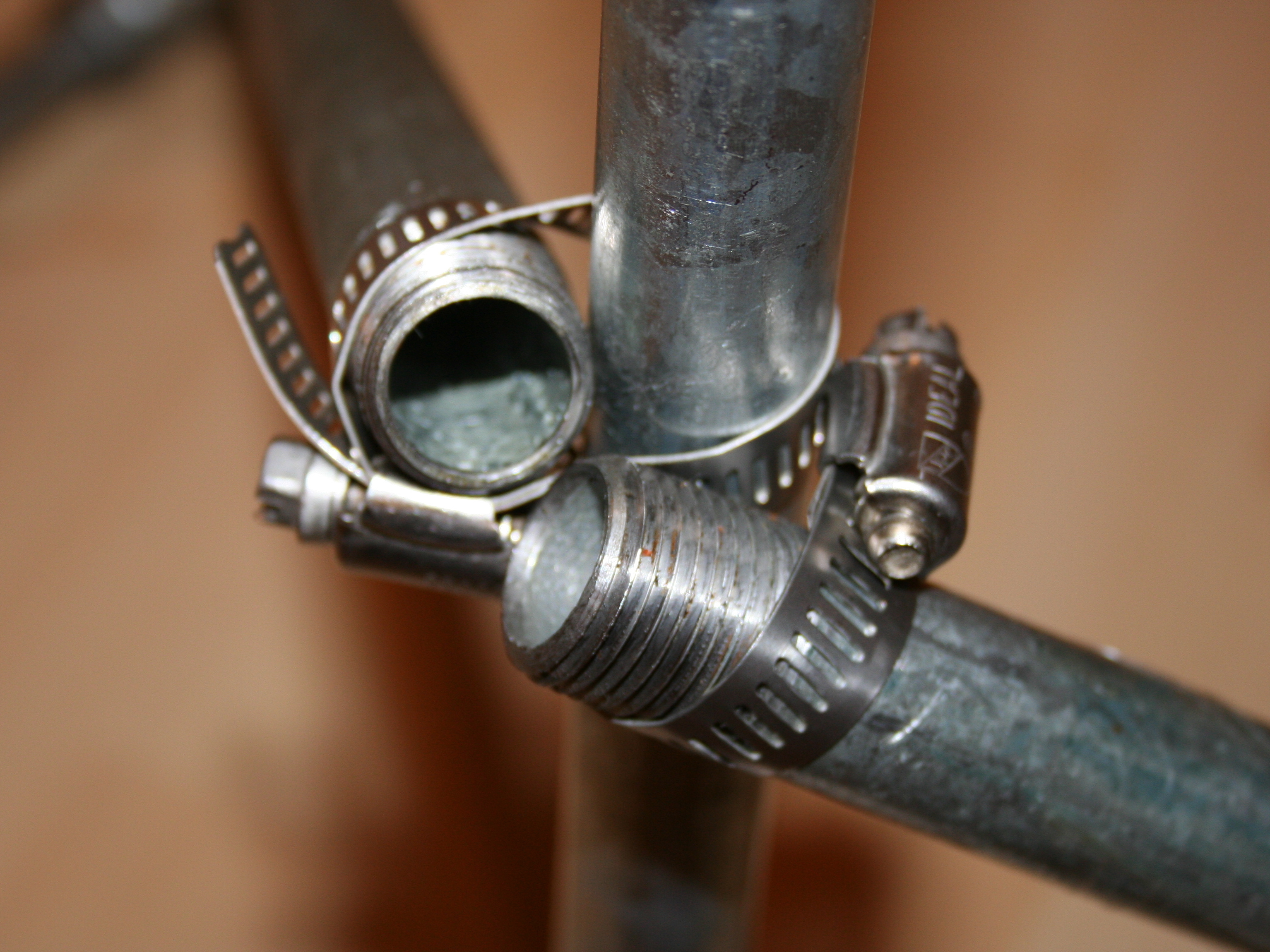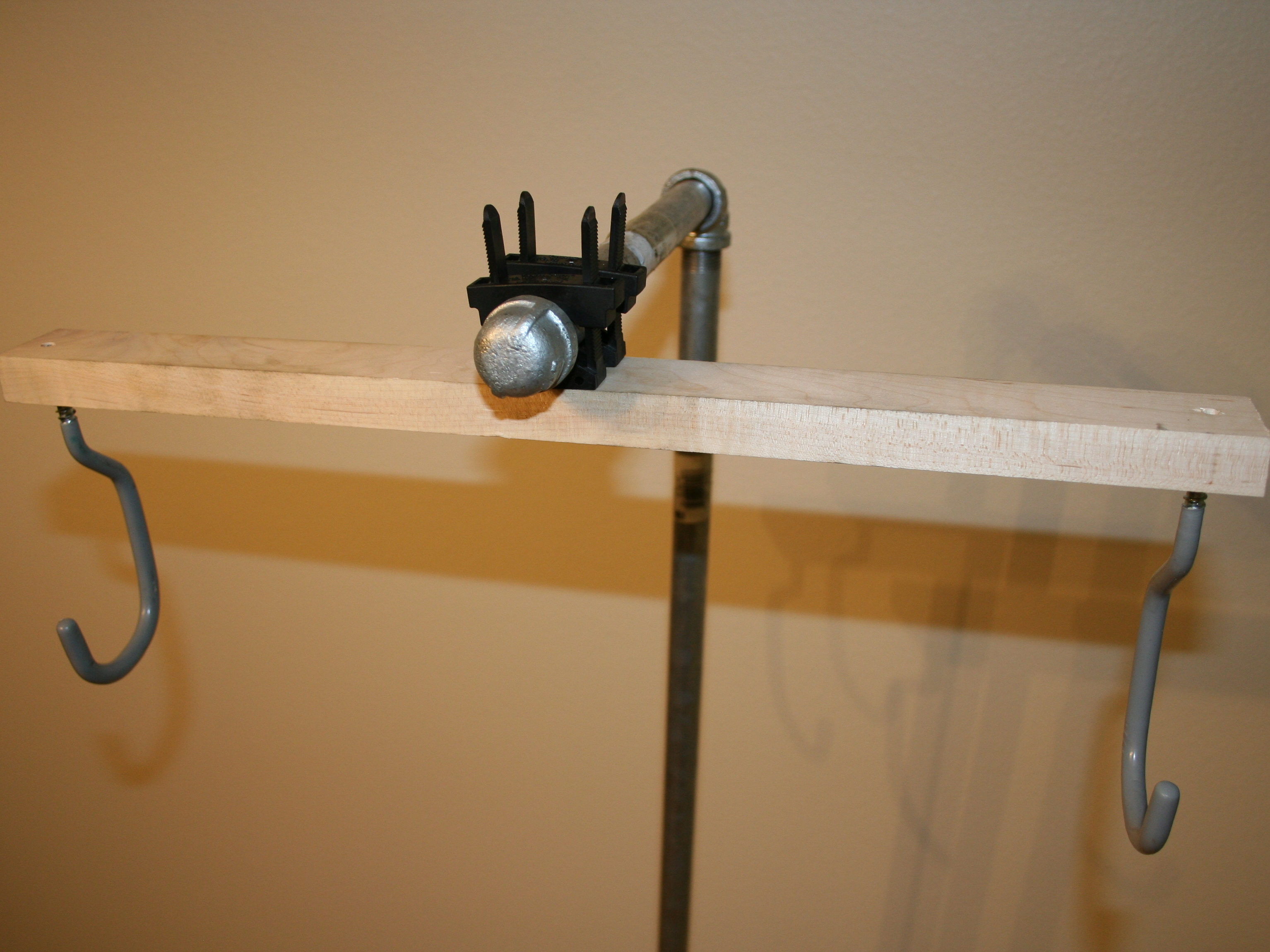I looked around town for a bicycle repair stand, and the cheapest one was $150. Yikes! Rather than resign myself to flipping the bike upside down on its seat and handlebars, straining my back, and always having to work upside down, I made my own repair stand out of galvanized pipe for about $30. It’s easy to take apart and reconfigure with new pieces, so I’ve refined the design through multiple iterations. Here’s the latest and most stable version of the hardware.
You can find almost all the materials in the plumbing section of a hardware or home improvement store, or if you’re super resourceful, you may be able to scavenge it all for free.

















